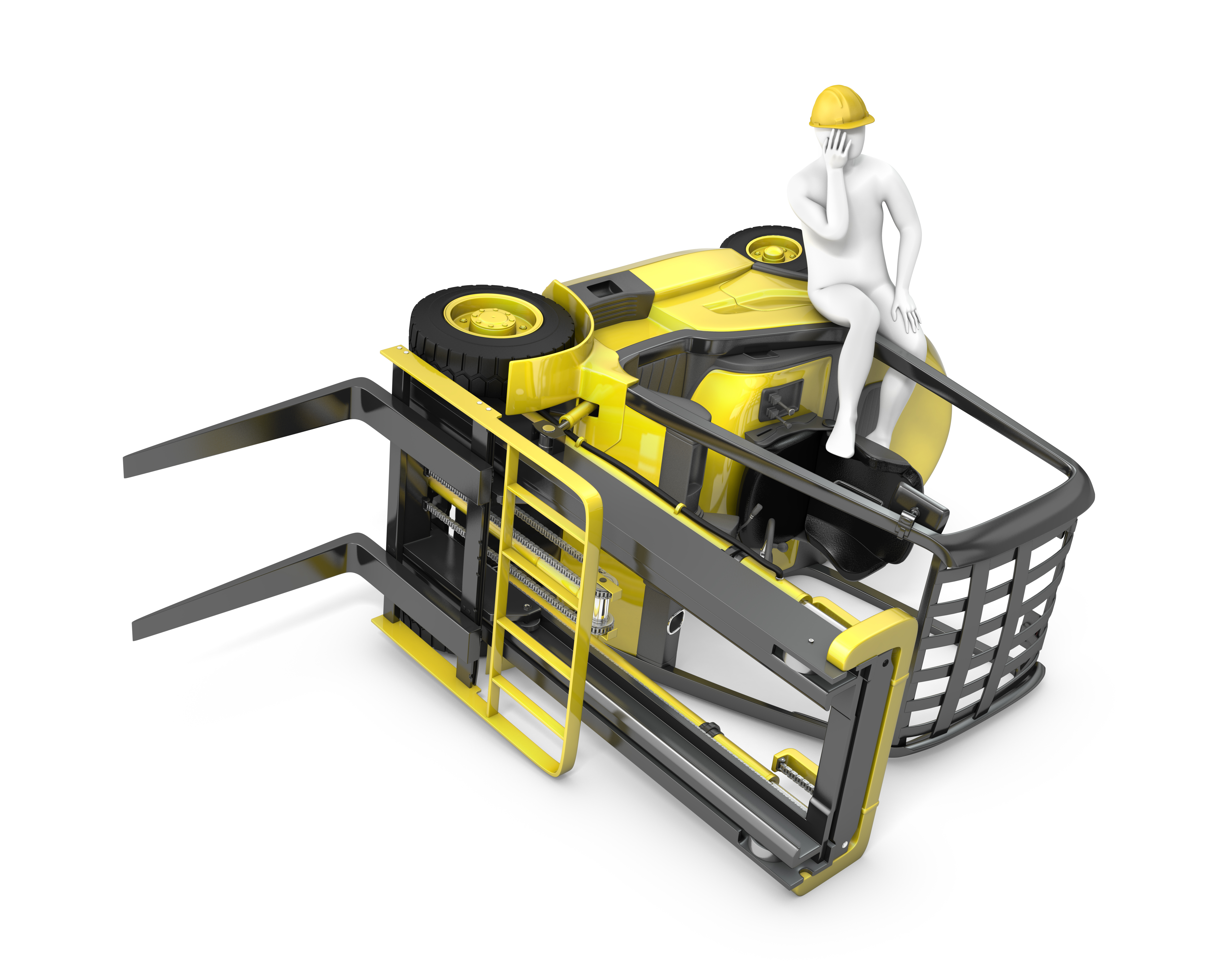We use cookies to make your experience better. To comply with the new e-Privacy directive, we need to ask for your consent to set the cookies. Learn more.
Common Types of Forklift Collisions (And How to Avoid Them)
The first rule of forklift operation is simple: don't run into anything or anyone. Lift truck collisions can mean damaged stock, high fleet repair bills, and even injured workers.
Unfortunately, even with comprehensive, ongoing training programs in place, forklift accidents are distressingly common. Industry journal Material Handling & Logistics reports that more than 94,000 forklift injuries occur annually, and that OSHA recorded more than 3,100 forklift violations over the last year.
Here are five common types of forklift collisions, along with tips to keep your workforce out of next year's statistics.
1. Reversing into people/equipment/other lift trucks.
Operators have a tendency to keep a careful eye on their loads — in other words, on the front of the vehicle. This becomes a problem when lift trucks travel in reverse.The solution is to train operators to do 360-degree visual checks before accelerating from a stop, regardless of how their trucks are traveling. Refresher courses should include a reminder to look toward the direction of travel.
2. Racking strikes at row ends.
Entering and exiting aisles isn’t easy, especially in high-capacity facilities that optimize every inch of floor space. As lift trucks make 90-degree turns to enter or exit aisles, they risk smashing into racking units, with potentially Youtubable results.In addition to training operators to proceed carefully around row ends, protect racking with heavy duty structural bollards or steel barrier rails. Of course, forklifts can also run into racks at any point along the aisle, so consider extending barrier rails down the whole length of the racking unit.
3. Pedestrian strikes.
From 1980 to 1994, 20 percent of U.S. forklift fatalities were the result of pedestrian strikes. Fortunately, these numbers have diminished over the last few decades; however, when workers on foot share floor space with lift trucks, managers need to take additional steps to limit risks.The National Institute for Occupational Safety and Health (NIOSH) recommends separating forklift traffic from pedestrians wherever feasible. That means setting aside lanes for foot traffic and separating lift truck routes with high-impact barrier rails.
4. Collisions with road vehicles.
With steep ramps, abrupt ledges, and rolling semi-trailers, the loading dock is a dangerous place to operate a forklift. These hazards are compounded on docks near general traffic areas.Trade publication Works Management describes a fatal 2011 case in which a semi-trailer truck backed into a forklift driver near a U.K. factory dock. As the Health and Safety Executive investigation found out, the factory allowed forklift operators to drive onto a public road to load trucks.
Managers should always try to avoid these types of shared traffic areas, but if this isn’t feasible, it’s extremely important to keep lift truck drivers informed of the dangers and to post adequate signage. 
5. Truck tipping.
Overturning was the most common type of forklift accident that resulted in a fatality between 1980 and 1994. It’s also one of the most easily avoidable collision categories.Overloading the forks or distributing weight poorly can cause trucks to tip forward, while sideways spills occur most often during turns or on inclines. Teach operators to travel slowly and carefully on grades, and not to overload the lift truck. Operators should also be trained on how to react during a tipover; jumping out of the vehicle is always the wrong move, since this action can increase the chances of an injury.
To prevent every type of forklift collision, NIOSH, OSHA, and manufacturers prioritize operator training. As one NIOSH Alert notes, you should never operate a lift truck unless you have been adequately trained and licensed. OSHA regulations require comprehensive training programs and ongoing refresher courses for all forklift operators, and any additional training can further reduce accident rates.
In addition to a proper ongoing training program, adequate barriers and signage will limit the frequency and severity of accidents. Forklifts should also be regularly inspected, maintained and repaired. In a properly outfitted facility, lift trucks won’t pose a serious danger to employees, stock, or other equipment — but as is the case with any piece of heavy-duty equipment, they require regular attention for safe and efficient operation.
References:
Blanchard, Dave. "How Safe Are Your Forklifts?" Material Handling & Logistics 70.6 (2015): 12-15. Business Source Premier. Web. 30 June 2015.
Gosney, Max. "Don't Let This Happen On Your Site." Works Management 68.2 (2015): 31-32. Business Source Premier. Web. 30 June 2015.
“Powered Industrial Trucks (Forklift) eTools: Operating the Forklift: Traveling & Maneuvering.” Occupational Safety and Health Administration. United States Department of Labor, n.d. Web. 30 June 2015.
“Preventing Injuries and Deaths of Workers Who Operate or Work Near Forklifts.” The National Institute for Occupational Safety and Health. Centers for Disease Control and Prevention, 2001. Web. 30 June 2015.
